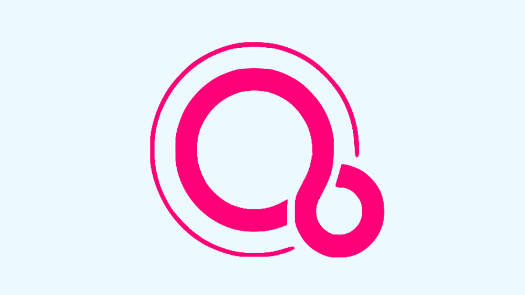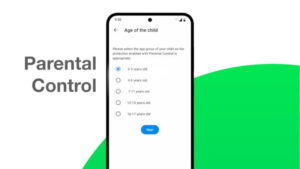Google has plans to replace Linux-based Android with its own built-from-scratch operating system, Fuchsia. Why? Mainly, it seems, to get away from the GPL.

Roblimo’s Hideaway
Google Fuchsia first saw the light of day in the summer of 2016 as an unannounced bit of code posted on GitHub. Now, in May 2017, the word is being spread by so many tech news outlets that we don’t have room to list them all.
The Fuchsia demo app is called Armadillo, and you’re free to build it for yourself. We even found an article for you titled How to build Fuchsia Armadillo for Android in case you want to see how Fuchsia looks on your own Android phone or tablet.
No Linux here, no siree!
One good — or bad — thing about Fuchsia, depending on your world view, is that it isn’t built on Linux. The kernel is Magenta, which you can learn about from this GoogleSource subsite Magenta Kernel, Core Drivers and Services. It’s open source, licensed under a mish-mash of BSD 3, MIT, and Apache 2.0. Apps and the Fuchsia user interface are being written in Flutter, which the developers say “makes it easy and fast to build beautiful mobile apps.” And they’re claiming Flutter is truly cross-platform, so that iOS no longer requires its own app that is distinct from the Android — or soon, Fuchsia — version.
Supposedly, one reason Google is dumping the Linux kernel is the tedium of keeping up with endless minor patches and new .point releases. Magenta and Fuchsia are under Google’s control, same as Android, so they can update purely on their own schedule. Still, if you want to fork either one, go right ahead; just don’t use Google’s trademarked program names. Your versions will need to be Bobenta or Footya or something. But hey! It’s all open source, so you can do whatever you like to the code — without GPL restrictions, no less.
What’s in a name?
Is there any reason Google can’t call Fuchsia “Android II” for public release? No reason whatsoever. They can easily call it that, especially if they plan to deprecate Linux-based Android at some point. In fact, that might be a pretty good naming idea, considering the popularity and major cred Android has accumulated.
Backwards compatibility? Apparently not. But maybe so. I’ve seen claims in both directions, and have no official or canonical word either way so far. I’m sure we’ll find out in due course, just as we’ll find out if we can upgrade our current Android phones (mine’s an LG Stylo 2) to the new Google OS, assuming we want to.
Will we all want to move to Fuchsia? We’ll see. I’m sure the phone and tablet makers will want us to, especially if it gives us the urge to buy shiny, new handheld products designed to make full use of Fuchsia’s unique capabilities — or something like that, as long as it sounds good in ads and gets us to buy their latest whatzits.
Now you have the basic, user-level skinny on Fuchsia. For a deeper tech look, check this LWN article from all the way back in March, obviously written well before Google PR started spreading the Fuchsia word to the media masses.
And having said that, I will now close this article with a plug for LWN.net, which is just about the finest Linux news source there is, and is well worth its low paid-subscription fee if your income depends in any way on keeping up with the latest Linux advances. (And GNU/Linux advances, too, of course.)
Robin “Roblimo” Miller is a freelance writer and former editor-in-chief at Open Source Technology Group, the company that owned SourceForge, freshmeat, Linux.com, NewsForge, ThinkGeek and Slashdot, and until recently served as a video editor at Slashdot. Now he’s mostly retired, but still works part-time as an editorial consultant for Grid Dynamics, and (obviously) writes for FOSS Force.








I expect that (1) they’ll just call it “Android” (and whatever version number they’re up to by then — 9, 10, whatever) and (2) they won’t release it until it’s compatible with existing Android apps — at least, most of them.
Can’t say for sure, of course, but that’s my guess. Most customers don’t know or care what kernel their new phone is running; they just know that they already have an Android phone and have purchased apps for it that they don’t want to lose when they upgrade.
And I suspect there is work underway to get Magenta under ChromeOS too since keeping Chromebook’s ability to run Android apps is, or should be, a high priority.
what i want is raspberry pi made into a phone: linux, root access, expansion slots
oh, and most important of all: NO google
everything google makes is 1)crippleware, 2)spyware, and 3)the worst, most dumbed down (aka useless) software on the planet, and 4)adware so heinous and intrusive that it should be punishable with mandatory prison terms of at minimum 20years
@GoogleIsClassWar That’s why I use an Android phone without access to the Google Playstore, also why the only service, other than telephone, I use on my Android is the Wireless Broadband (basically when it’s not being used as a phone, it’s a glorified Wireless Broadband router.
As far as Apps go, if they aren’t in the F-Droid, they don’t exist.
I’m still running Gapps on my phone for the time being, but I’ve been considering flashing it and only using F-Droid apps the next time. Has OsmAnd gotten any better? It’s been awhile since I tried it.
Before we lost most of the comments on this article, I made one to the effect that, while I think Canonical made a lot of mistakes with Ubuntu Phone, I’m still disappointed to see the project shut down, because we really *could* use another choice besides Apple (you don’t own your phone) and Google (spyware/security nightmare). Course, even with Ubuntu Phone there’s still the problem of proprietary firmware blobs.